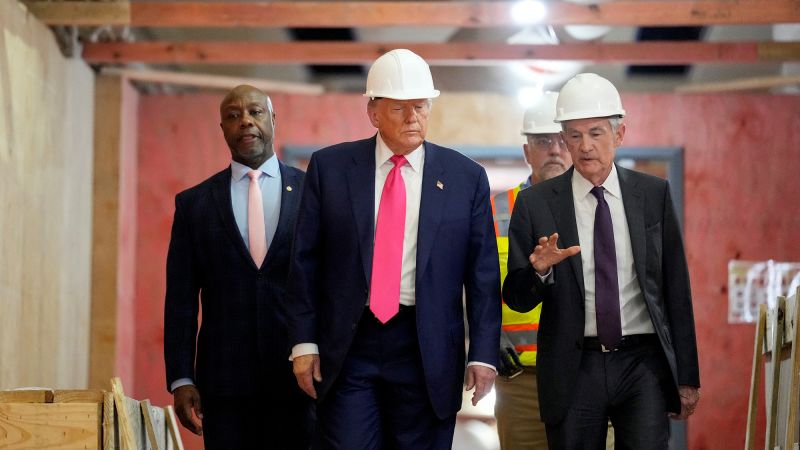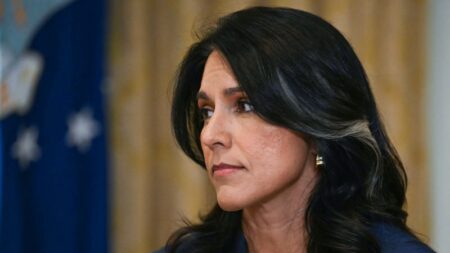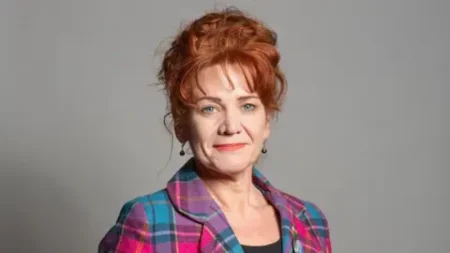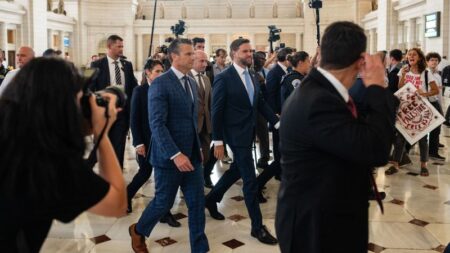The ongoing tension between President Donald Trump and Federal Reserve Chair Jerome Powell came to a head during a recent tour of the renovation site at the Federal Reserve’s headquarters in Washington, DC. This public encounter highlighted the conflicting perspectives of the two powerful figures regarding the costs associated with federal agency projects. Trump claimed the renovation would surpass $3 billion, while Powell stood firm at $2.5 billion, a figure based on official projections. The stark contrast in their statements left Powell visibly taken aback, prompting him to clarify that the higher figure articulated by Trump mistakenly included costs from a third building that had previously been refurbished in 2021.
The event was notable in more ways than one; presidential visits to the Fed are rare. The tour was attended by several prominent figures, including South Carolina Republican Senator Tim Scott, North Carolina Republican Senator Thom Tillis, and members of Trump’s team such as Office of Management and Budget Director Russell Vought. Many attendees donned hard hats, signifying the construction-focused nature of the day’s activities. The project itself has sparked significant debate as pressure mounts on Powell to consider lowering interest rates amid economic uncertainty, an approach the Fed has hesitated to embrace, preferring to assess the effects of Trump’s tariffs before any decisive changes.
During his comments, Trump expressed a desire for lower interest rates, signaling frustration over the Fed’s ongoing resistance to such measures. The tour was initially intended as a mere engagement for Trump’s staff to observe the renovation, which has exceeded budget expectations, leading to accusations from the White House that proper regulatory oversight might have been skirted. After the tour, Trump took to social media to declare it a “Great Honor” to witness the renovation progress, notably refraining from his typical moniker for Powell.
The exchange at the renovation site was not merely a superficial encounter; it underscored a deeper battle over the Fed’s independence and operations. Traditionally, U.S. presidents have steered clear of publicly engaging with the Fed’s decisions, especially with sensitive topics such as interest rates. However, Trump has not shied away from openly criticizing Powell, dubbing him “Too Late” for his perceived failure to respond to the economic needs of the country. Trump’s administration has insinuated that the Fed’s renovation project could serve as grounds for Powell’s dismissal. Despite this, Trump has declared he has no immediate plans to fire Powell, understanding that such an action could prompt economic chaos and potential legal challenges.
The discourse surrounding the Fed’s renovation project further highlights the ongoing political tension as the renovation has reportedly outstripped its initial budget by over $600 million. Critics from within the administration have described the project in hyperbolic terms, referring to it as the “Palace of Versailles,” a testament to perceptions of extravagance and mismanagement. Powell has defended the renovation process, asserting that it is necessary due to the historical buildings involved needing extensive repairs.
The renovated structures include elements such as improved security features, which have significantly contributed to the rising costs. Scaffolding and construction materials were heavily present at the Eccles building, one of the two historic sites undergoing refurbishment. Powell has indicated that inflation and labor costs have substantially impacted the project’s budget as delays and tariffs complicate matters further.
The complex relationship between Trump and Powell epitomizes a broader struggle within U.S. economic policy, revealing differing approaches toward fiscal management and central banking. While Powell continues to navigate the Fed’s independent mandate, Trump’s increasingly vocal demands aim to align monetary policy closely with his administration’s economic goals. Despite these pressures, Powell is steadfast against compromising the integrity of the Federal Reserve, consistently asserting that past and present operations remain within the bounds of careful oversight.











